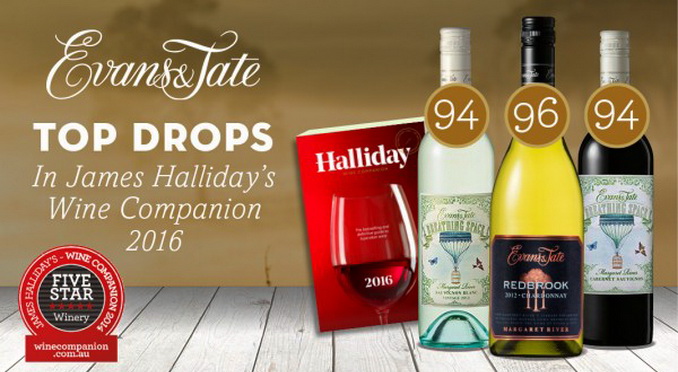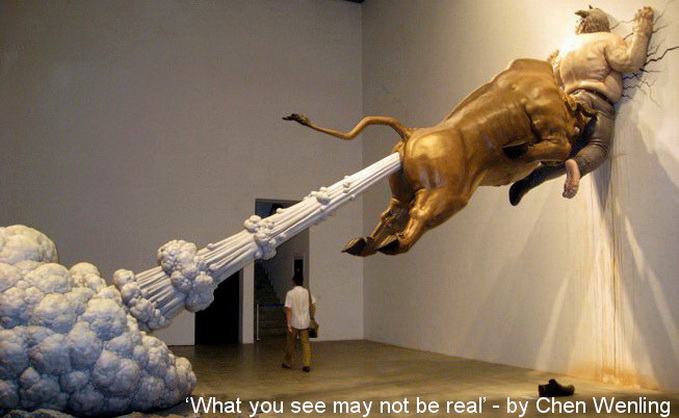Sticker Shock or Sticker Scam?
(This is an updated version of an earlier post)
I always read the mailer from Bert Werden at Winestar with interest. I can’t remember a Tuesday when it didn’t start with a 95 or 96 point Halliday sub-$20 bargain. Why does Bert start his mailer like that every week? Because it sells wine.
As I’ve written elsewhere, Halliday scores have become bankable currency that is more valuable to wine companies than major show trophies. More and more retailers now advertise secret deals purely on the basis of Halliday’s scores because they sell wine. Punters fall for these scams.
Yes, let’s call it for what it is: a scam. Wine companies and retailers pay for those Halliday stickers and the right to cite his rave reviews, just as they do for medal stickers from the big shows. In that post I wrote that the medal tally from the Decanter World Wine Awards and the International Wine Challenge 2015 was staggering: 11,152 out of some 16,000 entries for the DWWA, and a similar number for the IWC – in other words: 2 out of 3 wines scored medals.
Banking on Trust
As we’ve shown elsewhere, Halliday’s scores are just as exaggerated, usually by about 3-5 points compared to the Winefront, Huon Hooke and ourselves. That doesn’t sound like a lot in 100 point system, but we really only use about 12 points of that scale, since any wine over 97 points is angels’ tears, and any wine under 86 points is only fit for cooking.
| Halliday’s Scoring System | Our Scoring System |
| 97 – 99 – Exceptional | 99 – 100 – Perfection |
| 95 – 96 – Outstanding | 95 – 98 – Outstanding |
| 94 – On the cusp of gold medal status | 91 – 94 – Pretty damn good |
| 90 – 93 – Highly Recommended | 87 – 90 – OK to Good |
So you can see that a 95 point score form us suggests an outstanding wine, and that a 95 point score from Halliday is often a 90 point wine in our book. When Halliday rates a wine at less than 90 points, you can be sure that the wine isn’t worth your while unless it’s 5 or 6 dollars. If the great man wants to trash his well-earnt reputation, that’s his business. Retailers and wine companies love him to bits because he helps them move wine, and the vast majority of punters still trust his scores because they don’t know any better.
I’m not the only one crying foul here: Huon Hooke and Bob Campbell set up their Real Reviews Alliance as a protest against ‘Inflated Scores, Kickbacks and Cash for Comment in the Wine industry.’ And even Bert Werden knows how this goose is cooked: ‘I could count on one hand the number of times this decade that I have rated a wine higher than mainstream wine commentators,’ he confides in a candid moment. So Bert admits that the scores are inflated yet he’s happy to use them to flog his grog.
Conflicts of Interest
I sometimes wonder what happens when the Winefront’s Campbell Mattinson writes reviews for the Halliday magazine or the Wine Companion. Does he inflate his scores to Halliday’s level, and deflate them when he has his Winefront hat on? Mattinson reviews wines for the annual book, and is the editor of HALLIDAY as the old wine companion magazine is now called.
It’s the same glossy collection of stories, advertorials and infomercials with no way of telling which is which. ‘I like things to be clear,’ I wrote when I first checked that magazine. ‘I like to know when an ad is an ad, and when a story is a story. I loathe advertorials, infomercials, features and promotions disguised as stories.’
In the HALLIDAY magazine, all these elements are blended into a smooth gravy for easy and uncritical consumption. In my more recent post Pulling the Cork on Ethics in Wine Writing, I wrote about an ABC program that discussed ethics in wine writing, where the representative of Hardie Grant (Halliday’s Publishers) said he couldn’t see anything wrong with James’ top 100 wineries having to pay for a full listing in the magazine’s supplement. As I said, I like things to be clear.
The Real Story
We don’t sell wine, our ratings aren’t bankable currency and we call it as we see it. What we do is very simple: We look for the gems, wines with a high quality / price ratio, wines around $10 that we can give a real score of 90 points to, and wines around $20 that come close to 95 points.
We buy some samples and receive others from wineries, distributors or retailers; we taste them over a couple of days, with and without food, with and without friends or family. We’re not into clinical assessments; we’re trying to find wines that people will love, and wines that work with the way they live and the food they eat.
In every weekly mailer, we list some wines we haven’t reviewed ourselves (and make that clear). We do that because a special wine or the super deal may vanish before we get our hands on a sample, but there is a risk of getting it wrong even when we know the winery and have checked reviews of the wine from reliable sources.
Looking for character, not Perfection
For most of us, perfect scores are not what wine is about. I ended my piece Wine Poetry and Perfect Scores with a plea from one of our subscribers: ‘Kim, the world wine industry is soooooo full of bullshit and false direction that I sometimes think I need out, to sell off my wines and go vegetarian just to escape, to regain perspective. Honestly, I’m sick and tired of the bullshit journalists, the pretension, the hustling, the egos, the point scoring, the investment portfolios. Can you tell me what I can do to regain my lost respect, my lost interest (even sanity)? I want imperfection! A little bret. A wine that says ‘up yours’ Mr journalist … Mr connoisseur … just drink me with a piece of good cheese.’
And I added: Jeffrey is right. Wine is about character, and character is always flawed. Strong characters are memorable, that goes for literature, art, food and wine, from Captain Ahab to Brett Whitely to Max Schubert, Murray Tyrrell and Rocky O’Callahan. Perfection is bland and boring. Give us wines that stand out for what they say, not for what others say about them. Give us wines we can remember and recognize the next time we meet them. To hell with perfection, let’s raise a glass to all those winemakers who make the wines they want to make, not the wines the experts want them to make.
Kim

